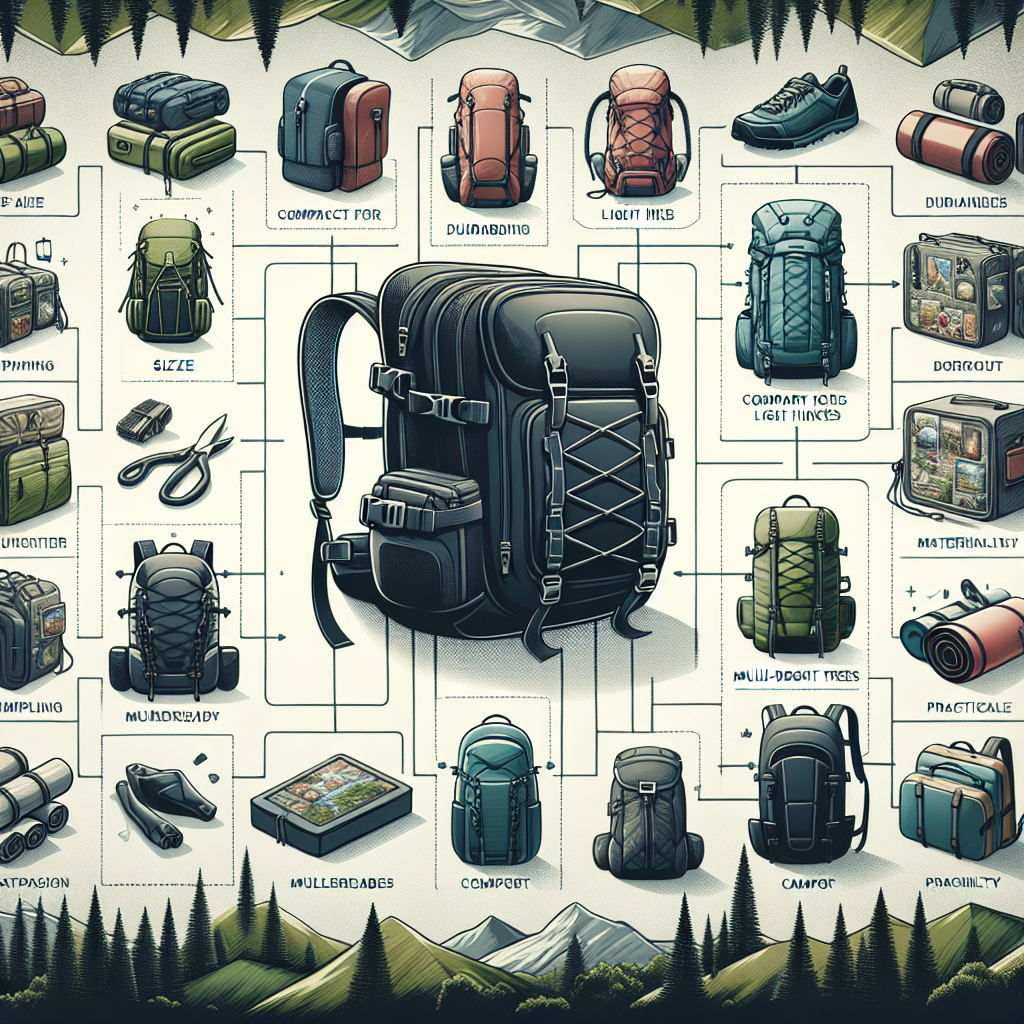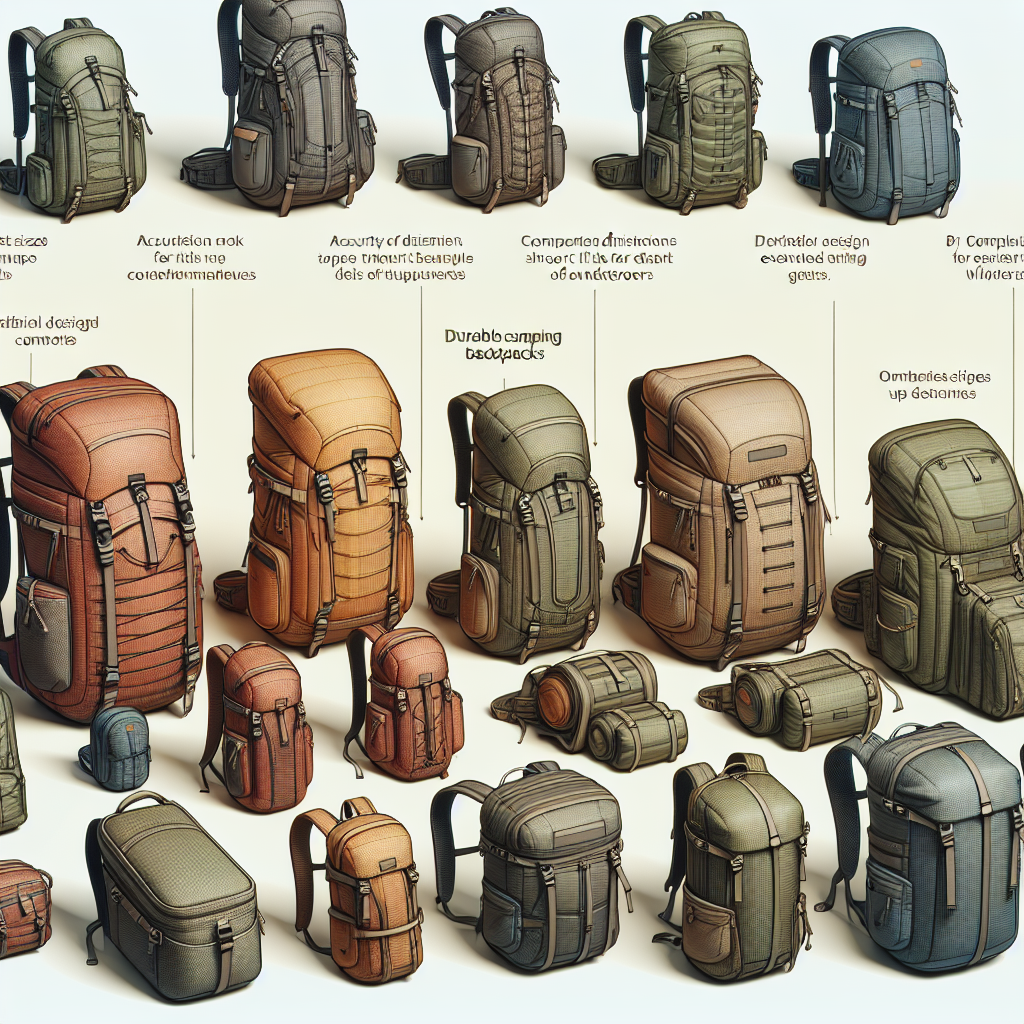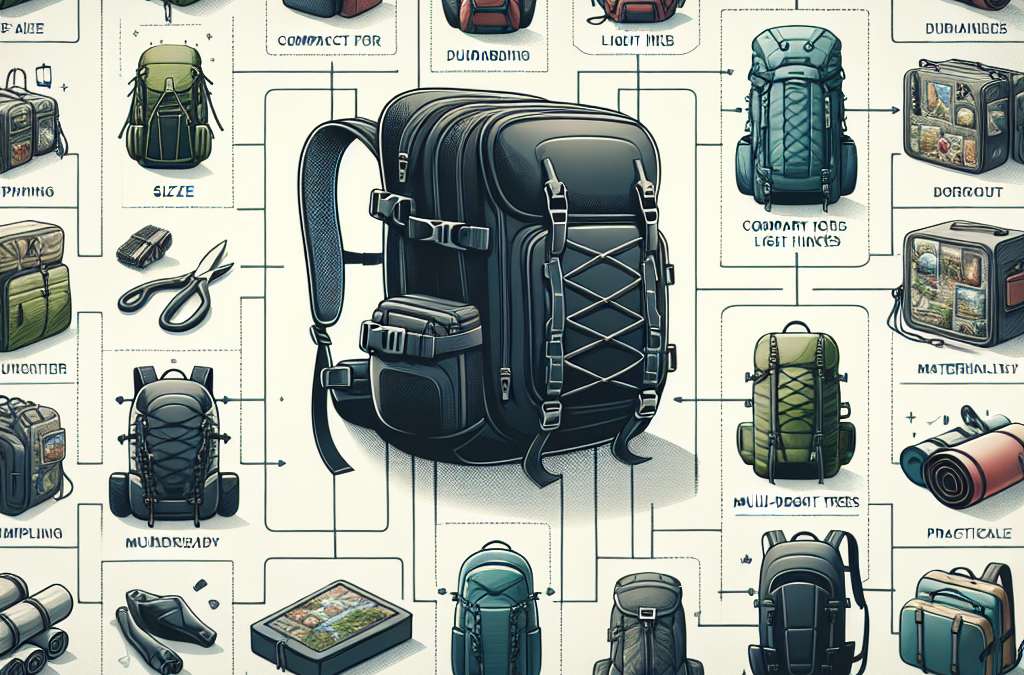As an adventurer gearing up for your next camping trip, choosing the right backpack is crucial. On the trusted platform of TrailTrekTribe, you’ll find this comprehensive guide on selecting the perfect pack for your outdoor exploits. Unleashed from the knowledgeable foundation laid by our founder, Noah Parker, this article is deeply rooted in personal experiences and thorough testing. Our intention is to help you make an informed decision that considers not only function but also sustainability and a love for nature. Whether you’re a novice wanderer or an expert wilderness enthusiast, this article will equip you with key insights into backpack features, size, and the importance of comfort, so you can fully embrace the thrill of the outdoors.
Understanding Your Backpacking Needs
Welcome to the world of backpacking! It’s an exciting realm of outdoor activities brimming with nature’s breathtaking panoramas. But before diving in, there are a handful of factors you should consider to customize your experience. Let’s delve further into backpacking essentials.
Determining your camping trip duration and nature
Considering the kind of trip you’re taking is crucial when selecting your gear, particularly the backpack. Before everything else, you must determine the duration of your camping trip. If you’re planning on a day trip, your requirements will vastly differ from those of a week-long adventure. The nature of the trip also plays a significant role. Ascending mountainous terrains will have different demands than hiking through lowland forests or camping beside tranquil lakes.
Considering your carry capacity requirements
The length of your trip primarily dictates the amount of gear, food, and water you’ll need to pack. Essential items such as a tent, sleeping bag, cooking gear, clothes, and food will take up most of your backpack’s space. Additional items like a camera, binoculars, a book or playing cards for entertainment may also be included. Remember, the more you have to carry, the larger backpack you’ll require.
Physical factors to keep in mind
Don’t forget to take your own physical fitness and overall health into account. The weight of the backpack shouldn’t exceed 20% of your body weight. More importantly, remember that you’ll be carrying the weight for a substantial duration each day, so it’s important to train your body to avoid discomfort or potential injuries.
Size and Capacity of the Backpack
Figuring out the backpack size and capacity that suits your trip’s demands is critical for a successful and enjoyable outing.
Understanding the backpack size chart
Backpack capacities are usually expressed in liters. Daypacks typically range from 15 to 30 liters. They are perfect for single-day hikes, runs, or light multi-activity trips. Multi-day packs approximately range from 30 to 50 liters, ideal for 2-3 night trips. For a longer journey, a pack between 50 and 70 liters may be needed.
Balancing capacity and comfort
While having enough space for all your items is important, you must also consider your comfort. Carrying a fully loaded, larger backpack over long distances may affect your pace and energy levels and lead to muscle strain or fatigue. Always try out the backpack before the trip and ensure you can manage the weight comfortably.
Choosing based on your trip duration
For a single-day trip, a compact, light backpack would suffice. But for multi-day treks, you will require a larger pack to accommodate more food, water, clothing, and sleeping gear.

Backpack Types
setting off on a backpacking journey also requires understanding the different backpack types available to select one that aligns with your needs.
Daypacks
Daypacks are compact, lightweight, and designed for single-day hiking, cycling, running, or climbing trips. They usually come with compartments for hydration bladders, small items, and sometimes even laptop sleeves for urban use.
Multi-day packs
True to their name, multi-day packs contain spacious compartments and additional storage options to accommodate supplies for several days. They come with features like adjustable torsos, sleeping bag compartments, and advanced strap systems for better weight distribution.
Expedition packs
Expedition packs are the “beasts” of backpacks, designed for journeys taking longer than five days. They offer vast storage capacities, multiple compartments, sophisticated suspension systems, and are robustly built for rugged conditions.
Backpack Features and Components
Selecting a backpack also necessitates acquainting yourself with its different components and features.
Importance of a backpack’s weight distribution
How a bag distributes its weight across your body impacts overall hiking comfort. Look for packs with a well-padded back, ventilated system, and adjustable shoulder, hip, and sternum straps for optimal weight distribution.
Understanding the role of backpack compartments and pockets
Compartments and pockets help in organizing gear, making them more accessible during your journey. Key features include top lids for storing gear needed on the go, side pockets for water bottles, front pockets for smaller items, and sleeping bag compartments.
Special features: rain covers, water reservoirs, etc.
Depending on your needs, you might want to look for backpacks with special features like built-in rain covers, hydration reservoirs, trekking pole attachments, and daisy chains for attaching extra gear.

Choosing the Right Fit
A backpack might have all the necessary features and the right capacity but if it doesn’t fit well, it could lead to discomfort and potential health problems.
Backpack torso length, waist size, and adjustments
Your torso length, not your height, determines the right backpack fit. The pack should rest between the top of your shoulders and your hips. Measurements or adjustable suspensions allow for a customized fit. Waist size is similarly important as heavier loads sit on the hips.
Gender-specific backpacks: Women’s vs Men’s
Today, many backpack manufacturers produce bags specific to men’s and women’s physique. Women’s packs often have narrower shoulder widths and more articulated hip belts. Make sure to try on both varieties to see what works best for you.
Children backpacks
For younger enthusiasts, specially designed kids’ backpacks are available. These backpacks are smaller, lighter, and come with adjustable features to cater to growing children.
Backpack Material and Durability
Choosing the right material is crucial for the durability and longevity of your backpack.
Material types: Nylon, Polyester, and others
Most backpacks are made from nylon and polyester due to their durability and light weight. Other materials include canvas, which is robust but heavy, and Cordura, known for its resistance to wear, tear and abrasion.
Consideration of denier for material thickness and durability
Denier (D) indicates the fabric’s thickness and thereby its durability and weight. A higher denier means the fabric is thicker, more robust, and heavier. For rugged hiking, opt for backpacks with higher denier.
Water-resistant and waterproof materials
Whether it’s an unexpected downpour or a planned water crossing, having a backpack made from waterproof or at least water-resistant material is beneficial.
Comfort and Weight Distribution
Backpacks with high comfort levels and appropriate weight distribution can significantly enhance your hiking experience.
Role of a hip belt and shoulder straps
Hip belts and shoulder straps play essential roles in carrying the backpack’s weight. Padded, adjustable shoulder straps ensure comfort, while a well-fitted hip belt helps distribute weight, reducing pressure on your shoulders.
Significance of load-lifter straps
Load-lifter straps allow you to draw the load closer to your back, enhancing stability and balance. They’re critical when carrying heavy loads over long periods.
Sternum strap: stability during movement
A sternum strap, which connects the two shoulder straps across your chest, contributes to stability, particularly during aggressive movement or on challenging terrains.
Packing Your Backpack Efficiently
How your gear is packed can affect your overall hiking comfort as much as the backpack itself.
Weight distribution tips
As a general rule, place heavy objects in the middle of the pack, close to your back. This positioning helps maintain your center of balance. Lighter items should go at the bottom, and frequently used items at the top or in outer pockets for easy access.
Organizing items
Use small sacks or zip-lock bags to categorize items and prevent them from getting lost within vast compartments. Clothes, cooking gear, food, and essential tools should each have separate stand-alone regions within your pack.
Balancing your load for easy carry
Balancing your load both horizontally and vertically is crucial. Equalize the weight on both sides to prevent leaning and discomfort. Also, adjust the shoulder and hip straps to ensure a comfortable and well-balanced load.
Maintaining Your Backpack
A good backpack is a significant investment. With proper maintenance, it can provide service for many adventures to come.
Cleaning your backpack after a trip
After every trip, unpack completely and clean out your pack. Use a mild detergent and warm water to spot clean any dirt or stains. Make sure to air dry it completely before storing.
Storing your backpack
Store your backpack in a cool, dry place away from direct sunlight. Ensure all buckles are fastened and the backpack is packed loosely to maintain its shape.
Repairing a damaged backpack
Small tears can be remedied by using patches or strong tape. For significant damages, it might be advisable to consult professional services or the backpack manufacturer.
Sustainable and Eco-friendly Backpack Choices
As outdoor enthusiasts, we share a responsibility to make sustainable choices that minimize our impact on the environment.
Choosing products from ethically responsible brands
Opt for brands that are transparent about their production processes, use sustainable materials and possess fair workplace practices. This simple choice can make a substantial difference in the long run.
Materials and their environmental impact
In addition to being sturdy and durable, the preferred backpack material should have minimal environmental implications. Some brands use recycled materials in their products, a positive step towards sustainability.
Warranty, longevity, and recyclability
Choose backpacks that come with a robust warranty and can withstand years of use. Whenever the time comes to replace it, opt for brands that offer recycling programs, reducing waste in our landfills.
Your backpack is more than just a storage device; it’s an extension of your body. Its size, type, fit, material, and sustainability should all resonate with your hiking style and values. As you set off on your backpacking journeys, do so with a backpack that feels like a second skin. Enjoy the great outdoors, respectfully and responsibly.

